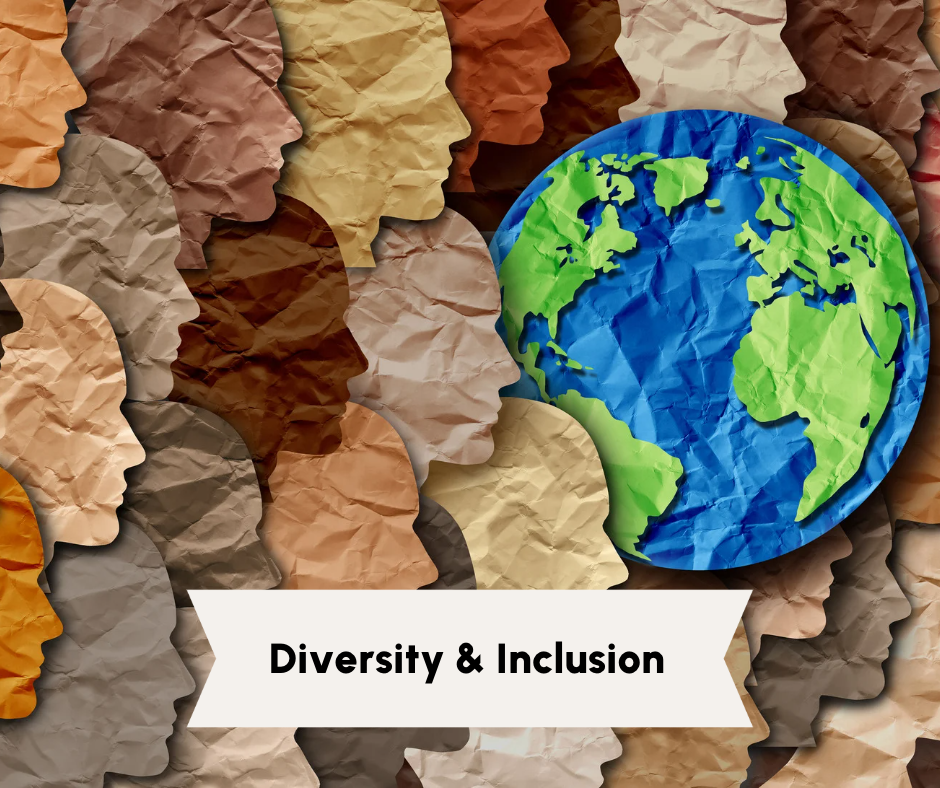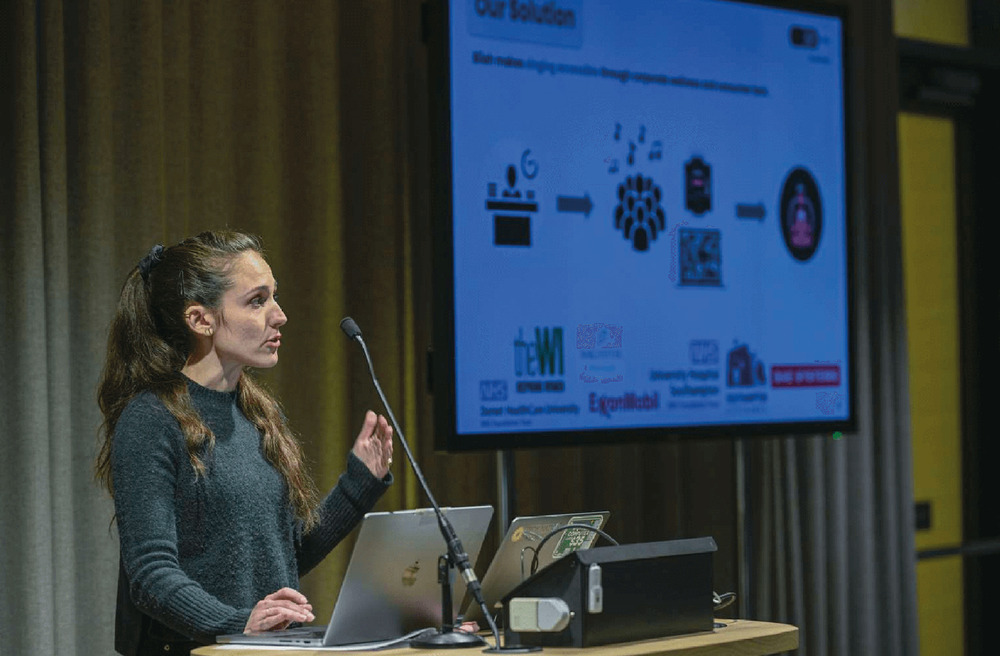There is a reason the word ‘harmony’ is so often used to describe a healthy social or work environment. It is a term affiliated with concord, togetherness, and agreement. Sure, many of us sing in the shower, the car, or with our kids, but why would you ever want to sing with the people you work with?
Well, there’s actually pretty persuasive evidence for why you might want to give it a go. First, there is substantial research that shows the benefits of group singing for mental health and wellbeing, as well as emerging data about singing’s positive impacts on our physical health too1.
But perhaps the most significant impact of group singing is in what happens between people who sing together. In short, it is good for the group. Hear us out:
- Practice at getting along: Perhaps you’ve had some personnel changes or otherwise feel the need for a structured ‘reset’ to promote growth and reflection within your group? Even the best of teams occasionally falls out of synch. Singing together could provide a solution. One theory argues that group singing helps teams work together better because it provides a forum for individuals within a group to practise getting along – the space and opportunity to perform ‘healthy’ or functional relationships within a safe and low risk environment2. When a group sings a song together, their breathing and heart rate can sync up3. While researchers aren’t yet sure if this has a role in how group singing helps us bond socially, it is theorised this might play a part.

- Diversity and Inclusion: Singing is a powerful tool for unlocking meaningful connections between people of different backgrounds. It is theorised that the function here is similar to point 2: the social dynamics of group singing provide a safe place for rehearsing positive social relationships.

One study conducted in Spain brought together a choir of people from diverse ages, genders, abilities, and cultural backgrounds. They found that most singers experienced significant improvements in their self-esteem and sense of belonging, as well as reduced anxiety4. Additionally, studies of intergenerational choirs have shown how singing together with people of wide age ranges is a healthy practice for all involved5.
It is well established that group singing improves social connectivity within socially marginalised groups. But inclusive group singing can spark change within a wider community as well. It helps people imagine and live out new, empowering realities in their personal lives and relationships well beyond the choir6.
What about virtual? While in-person group singing opportunities are ideal, virtual connections made through online singing sessions also make an impact. The key is collaboration, which can help expand (musical) community7. Music making mediated by technology (think Karaoke, TikTok-style collaborations, or ‘sing-a-long’ videos for kids) existed before COVID-19, but the pandemic has allowed for an interesting body of research to emerge about the efficacy of virtual musical offerings. While virtual group singing is not for everyone, studies have found there are benefits unique to the virtual realm, including a more ‘level’ playing field for less confident singers and better access for those with caring responsibilities or who are less able to travel8. Virtual singing is also a highly economic choice. There is new research being conducted in this area all the time to understand how group singing works, but the fact it does work to bond people is a time tested and implicitly known truth. Perhaps it is time to see what singing can do for your workplace culture and the relationships within your teams.
Author: Dr. Katie Bank
- Williams, E., Dingle, G. A., & Clift, S. (2018). A systematic review of mental health and wellbeing outcomes of group singing for adults with a mental health condition. European Journal of Public Health, 28 (6), 1035–1042. https://doi.org/10.1093/eurpub/cky115; Thoits, P. A. (2011). Mechanisms linking social ties and support to physical and mental health. Journal of Health and Social Behavior, 52(2), 145–161. https://doi.org/10.1177/0022146510395592; Clift, S. (2012a). Creative arts as a public health resource: Moving from practice-based research to evidence-based practice. Perspectives in Public Health, 132(3), 120–127. https://doi.org/10.1177/1757913912442269; Livesey, L., Morrison, I., Clift, S., & Camic, P. M. (2012). Benefits of choral singing for social and mental wellbeing: Qualitative findings from a cross-national survey of choir members. Journal of Public Mental Health, 11(1), 10–26. https://doi.org/10.1108/17465721211207275; Kang, J., Scholp, A., & Jiang, J. J. (2017). A review of the physiological effects and mechanisms of singing. Journal of Voice, 32(3), 390–395. https://doi.org/10.1016/j.jvoice.2017.07.008. ↩︎
- Camlin, D. A., Daffern, H., & Zeserson, K. (2020). Group singing as a resource for the development of a healthy public: A study of adult group singing. Humanities and Social Sciences Communications, 7(60). https://doi.org/10.1057/s41599-020-00549-0. ↩︎
- Grape, C., Wikström, B.-M., Östergren, J., Theorell, T., & Ekman, R. (2020). Heart rate variability synchronizes when non-experts vocalize together. Frontiers in Physiology, 11, 762. https://doi.org/10.3389/fphys.2020.00762. ↩︎
- Juan-Morera, B., Nadal-García, I., López-Casanova, B., & Estella-Escobar, L. (2024). Exploratory study on the impact on emotional health derived from participation in an inclusive choir. Healthcare, 12(13), 1355. https://doi.org/10.3390/healthcare12131355. ↩︎
- Sattler, G. (2013). Playing outside the generational square: The intergenerational impact of adult group music learning activities on the broader community. International Journal of Community Music, 6(3), 311-320. https://doi.org/10.1386/ijcm.6.3.311_1. ↩︎
- Drudge, K., & Nekola, A. E. (2024). Community choirs: The challenges and possibilities of inclusivity. In K. Norton & E. M. Morgan-Ellis (Eds.), The Oxford Handbook of Community Singing (online ed.). Oxford Academic. https://doi.org/10.1093/oxfordhb/9780197612460.013.19 ↩︎
- McDaniel, B. (2024). Singing into a smartphone: The persuasive affordances of collaboration on karaoke and lip-syncing apps. In K. Norton & E. M. Morgan-Ellis (Eds.), The Oxford Handbook of Community Singing (online ed.). Oxford Academic. https://doi.org/10.1093/oxfordhb/9780197612460.013.3.
↩︎ - Norton, K. (2024). What the pandemic couldn’t take away: Group singing benefits that survived going online. In K. Norton & E. M. Morgan-Ellis (Eds.), The Oxford Handbook of Community Singing (online ed.). Oxford Academic. https://doi.org/10.1093/oxfordhb/9780197612460.013.4. ↩︎








